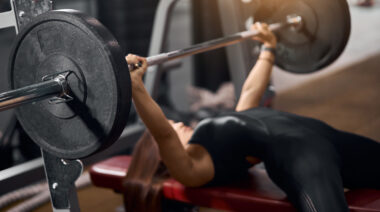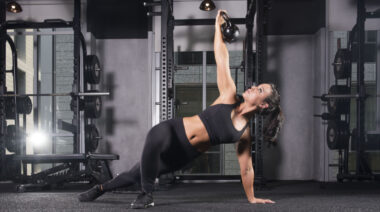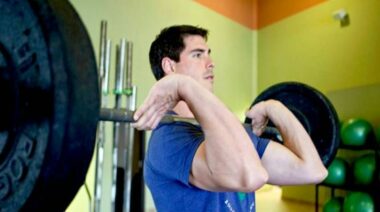Welcome to Squat Therapy. Squat Therapy is what I call these drills when working through them with my clients. The words seem to strike a perfect balance between the fact this is not going to be a comfortable situation and the fact that they will come out feeling a lot better. Squat Therapy is about getting comfortable with the uncomfortable – embracing your inner squat.
The fact of the matter is, the more time you spend in ‘therapy,’ in other words in these positions, the better your squats are going to look and feel. They are perfect to include in your warm up – even better if you do more than one (you’ll find your second one feels better than your first). Squat therapy sessions can just as well form part of your active recovery on rest days, or simply if you’re bored at work.
So what does this therapy consist of? It is based on four drills that can be used in any order and combination with the goal of improving the quality of your squat. Each drill will include use of an external object to help you achieve an ideal squat position. As well as helping your body to be able to hit and maintain these optimal positions, these drills will help your body to understand what your squat is meant to look and feel like, which has untold benefits.
The four drills are:
- The Wall Squat
- The Goblet Squat
- The Bar Squat
- The Pole Squat
The Wall Squat
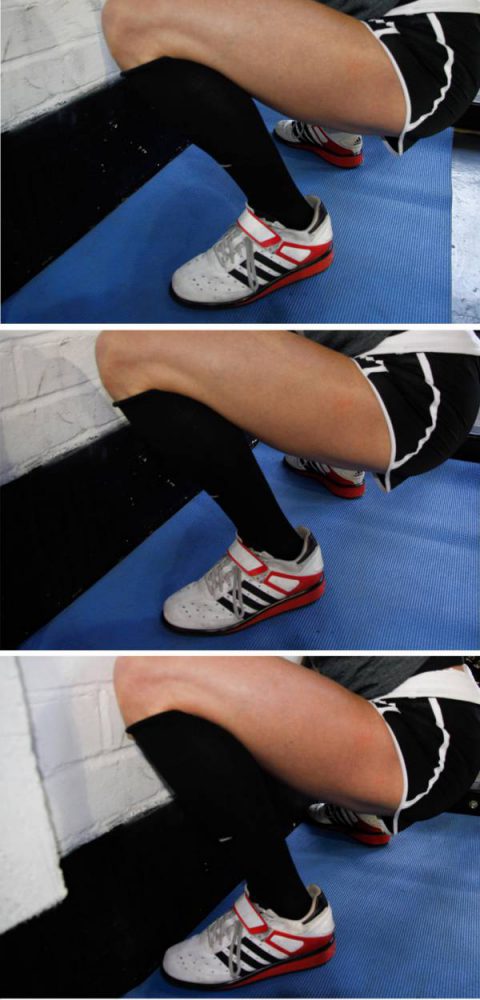 What is it: A squat performed whilst standing close to and facing the wall, with your hands against the wall but no other part of your body permitted to touch it.
What is it: A squat performed whilst standing close to and facing the wall, with your hands against the wall but no other part of your body permitted to touch it.
How to do it: Stand a foot’s width (as opposed to a foot’s length) away from the wall in a shoulder width stance. Stretch your arms out above your head and place them against the wall, with your arms parallel. Send your hips back and lower yourself down under control into a perfect full squat, with your hands remaining against the wall, but not allowing your head or torso to touch the wall.
Focus On: Pushing your knees out and your chest up – both of which will stop you hitting the wall and help you to keep your chest up and maintain optimal back position and torso angle whilst hitting a deep squat. Also try to keep your arms as vertical as possible.
Advanced tip: Bring yourself closer and closer to the wall, until you can perform a full squat with your toes touching the wall.
THE GOBLET SQUAT
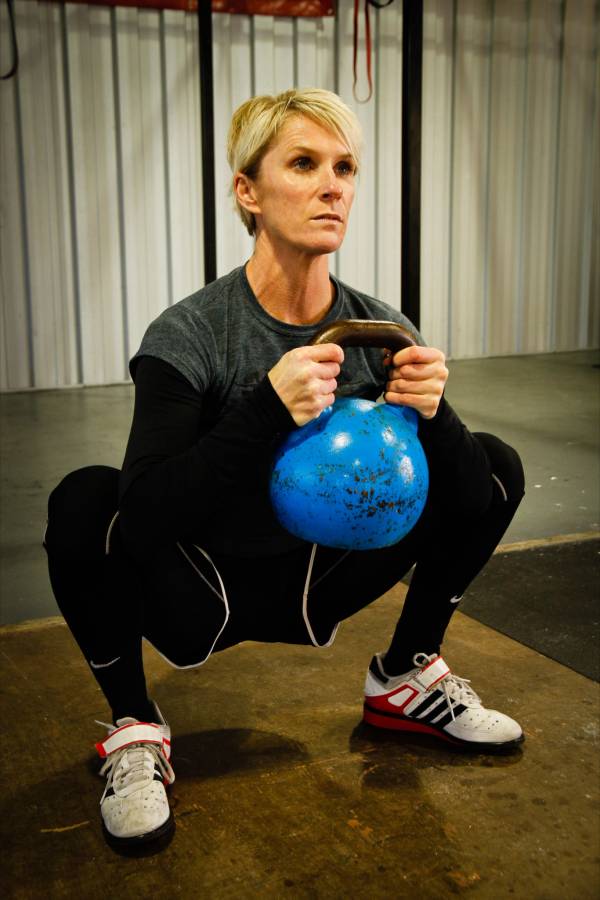 What is it: A squat with a kettlebell held like a goblet in front of your body.
What is it: A squat with a kettlebell held like a goblet in front of your body.
How to do it: Pick up a kettlebell and hold it by the handles close to your body, so your elbows are pointing down and out. Stand with your feet in a shoulder width stance, Lower yourself down into a deep squat – your elbows should be inside your knees. Use your elbows to push your knees right out.
Focus on: Pushing the knees out, using the elbows to pry them open. This also really helps to open up the hips.
Advanced tip: Take a deep breath and drive the chest up – then relax the belly and let yourself sink down a little lower. Then take another deep breath, hold for a few seconds – then relax, sink even lower, and repeat 4-5 times. You may find yourself surprised as to how low you can go.
THE BAR SQUAT
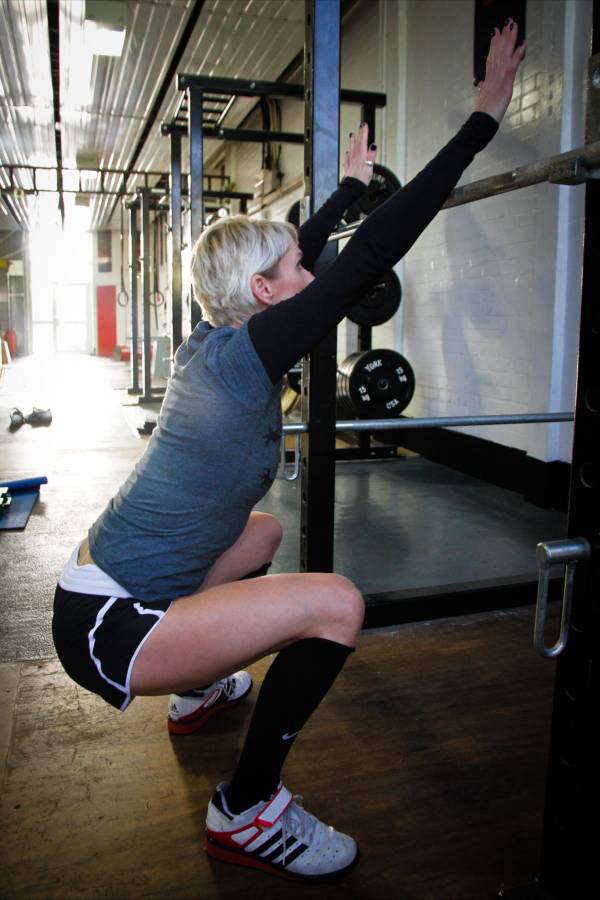 What is it: A squat using a racked bar, whilst standing close to it and with your hands/arms in constant contact with the bar.
What is it: A squat using a racked bar, whilst standing close to it and with your hands/arms in constant contact with the bar.
How to do it: Stand a foot’s length away from the bar. Stretch your arms out and place them on the bar. Keeping in contact with the bar, lower yourself down into a perfect squat, using the bar as a guide to keep your torso upright.
Focus on: Form on the way down and the way up. On the way down, send your hips back and your knees out. This will help load up your glutes and hamstrings. Use the bar to help you keep upright whilst you remain in this position for as long as you can manage. On the way up, squeeze your glutes, and drive through the heels to rise.
Advanced tip: Bring yourself few centimeters closer to the bar and try again. Aim to use the bar simply as a guide, rather than gripping into it with your hands at the bottom of your squat.
THE POLE SQUAT
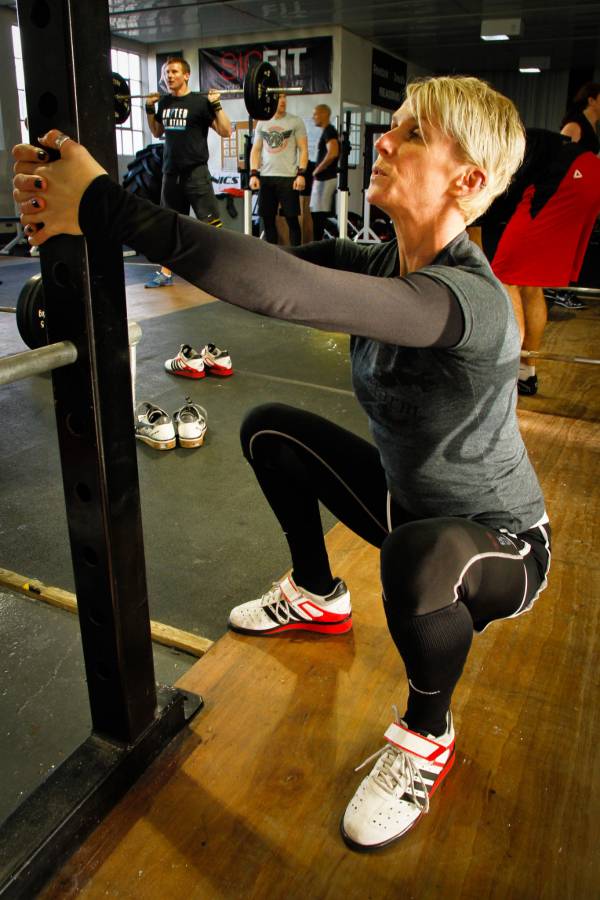 What is it: A squat performed whilst lightly holding a vertical pole (you can use part of a squat rack/pull-up rig for example.)
What is it: A squat performed whilst lightly holding a vertical pole (you can use part of a squat rack/pull-up rig for example.)
How to do it: Stand almost an arms length away from the pole with a shoulder width stance. Take hold of the pole with both and hands and sit back into the squat, using the pole to keep you upright and keep you from falling backwards.
Focus on: Maintaining a beautiful, upright, deep squat with perfect form. Create a little movement at the bottom, using the pole to stabilize you. Whilst keeping your feet planted, move your body a little in each direction before bringing your weight back to the center. If you find a particular tight spot, create further smaller movement around that area. Continue for 2-3 minutes. This will help to loosen up and create a better bottom position for the squat.
Advanced tip: Take less and less of a grip on the pole with each squat, until you are only using your fingertips on the pole to guide you into position.
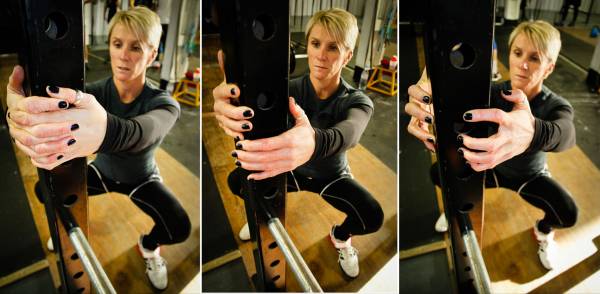
Benefits from each of these will transfer well into any type of squatting activity – the benefits being directly proportional to time spent in therapy. As with most therapy, you can think of it as something of a ‘black box’ system. Give it due time and attention, let the magic happen, and come out the other side a better person – or at least a better squatter.
Photos provided by Karl Buchholtz.

